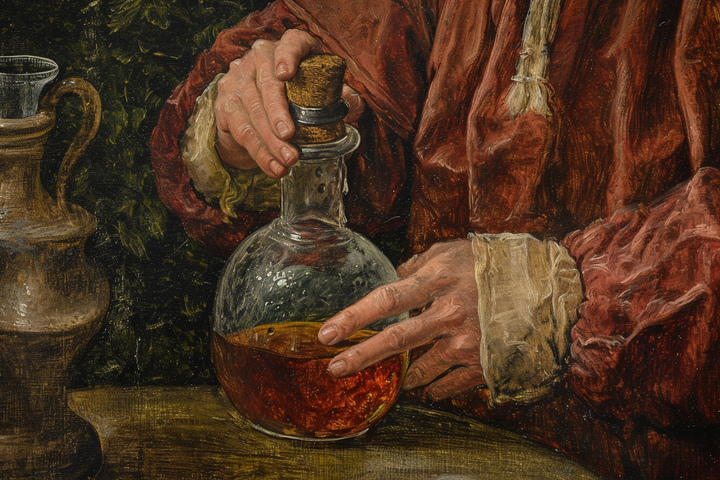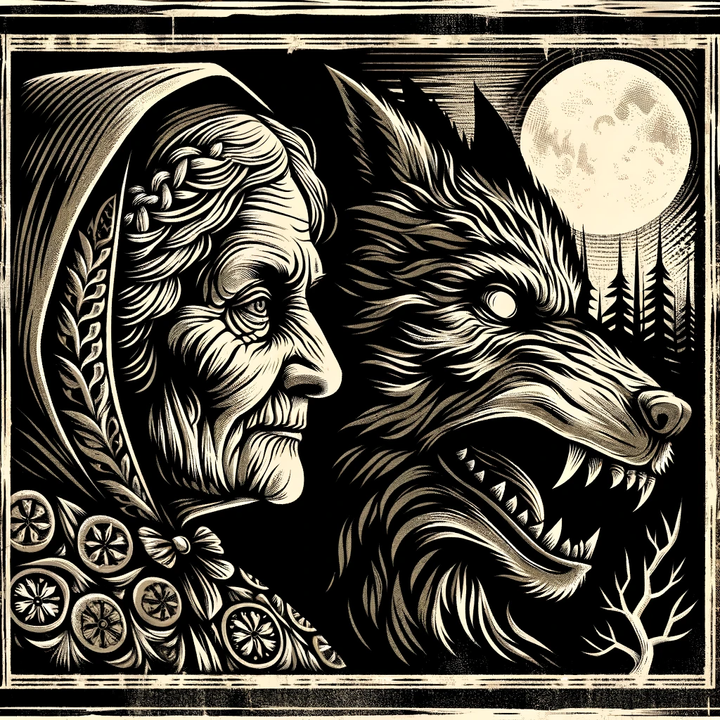Nicolas Flamel: The Enigmatic Alchemist of Paris

In the labyrinthine annals of the alchemical past, few figures stand as prominently as the enigmatic Nicolas Flamel. Born around 1330 and having passed away on 22 March 1418, Flamel's life and, more importantly, the legends surrounding him posthumously make him a figure of intrigue and speculation even today.
Early Life and Career
Flamel resided in Paris during the 14th and 15th centuries, a tumultuous period marred by warfare and innovations. But within the confines of this city, Flamel led a rather ordinary life – for most parts. As a French scribe, he dealt with manuscripts and ran two shops. In 1368, he married Perenelle, a woman of considerable wealth courtesy of her two previous marriages. Together, they became known for philanthropy, funding churches, and commissioning sculptures.
In 1410, towards the end of his life, Flamel designed his own tombstone adorned with images of Christ, St. Peter, and St. Paul. This artifact now resides at the Musée de Cluny in Paris. Flamel's documented life culminated in 1418, with records confirming his burial at the former Church of Saint-Jacques-de-la-Boucherie in Paris.
The Mythology of Flamel: Alchemist Extraordinaire
However, it was after his death that the legend of Nicolas Flamel truly took flight. It was in the 17th century that narratives emerged, painting him as an alchemist of unparalleled skill. The crux of these legends asserted that Flamel had not only created the philosopher's stone – a substance that could turn any metal into gold – but also the elusive "Elixir of Life," granting him and his wife, Perenelle, immortality.
According to a story nearly two centuries after his demise, Flamel had supposedly gained profound alchemical insights from a Jewish converso during his travels to Santiago de Compostela. With the alleged knowledge acquired from the mysterious Book of Abramelin the Mage, Flamel was rumored to have produced silver in 1382 and gold shortly after that.
The Livre des figures hiéroglyphiques, an alchemical treatise published in Paris in 1612, was attributed to Flamel. Within, the publisher narrated Flamel's lifelong journey of decoding a 21-page arcane tome he had acquired in 1357. This narration included Flamel's travels to Spain for translation assistance and his encounter with a sage who revealed the tome's true nature.
However, the authenticity of these tales was first challenged by Etienne Villain in 1761. He postulated that Flamel's legendary status was an invention by P. Arnauld de la Chevalerie, the publisher of the aforementioned treatise, who might have authored it using a pseudonym.
Legacy and Cultural Impact
Despite the dubious nature of his alchemical achievements, Flamel's legendary persona had firmly rooted itself in alchemical lore by the 17th century. He was referenced by historical figures like Isaac Newton and has since left an indelible mark on literature and pop culture.
For instance, the 19th-century literary maestro Victor Hugo mentioned Flamel in The Hunchback of Notre Dame. Albert Pike, in his work on Freemasonry, cited Nicholas Flamel. Even composers like Erik Satie found Flamel's life fascinating.
Flamel's alchemical legacy revived in the late 20th century with J.K. Rowling's debut novel, Harry Potter and the Philosopher's Stone. Here, Flamel was depicted as the very creator of the Philosopher's Stone. This portrayal continued in the 2018 film Fantastic Beasts: The Crimes of Grindelwald, with Brontis Jodorowsky giving life to the legendary alchemist.
Physical Remnants
A tangible fragment of Flamel's life still stands at 51 rue de Montmorency in Paris – the city's oldest stone house. An inscription on its wall is a poignant reminder of the era it belongs to. As of 2008, this historic structure housed a restaurant. Paris also honors Flamel and his wife with streets named after them, intersecting near the Tour Saint-Jacques.
Conclusion
In both his documented history and the legends woven after, Nicolas Flamel remains a captivating figure in the world of alchemy. While the veracity of his alchemical feats stays mysterious, his impact on culture, literature, and alchemical studies is undeniable. In our quest for understanding the arcane, figures like Flamel serve as luminous beacons, reminding us of the rich tapestry of human history and the enduring allure of the unknown.




